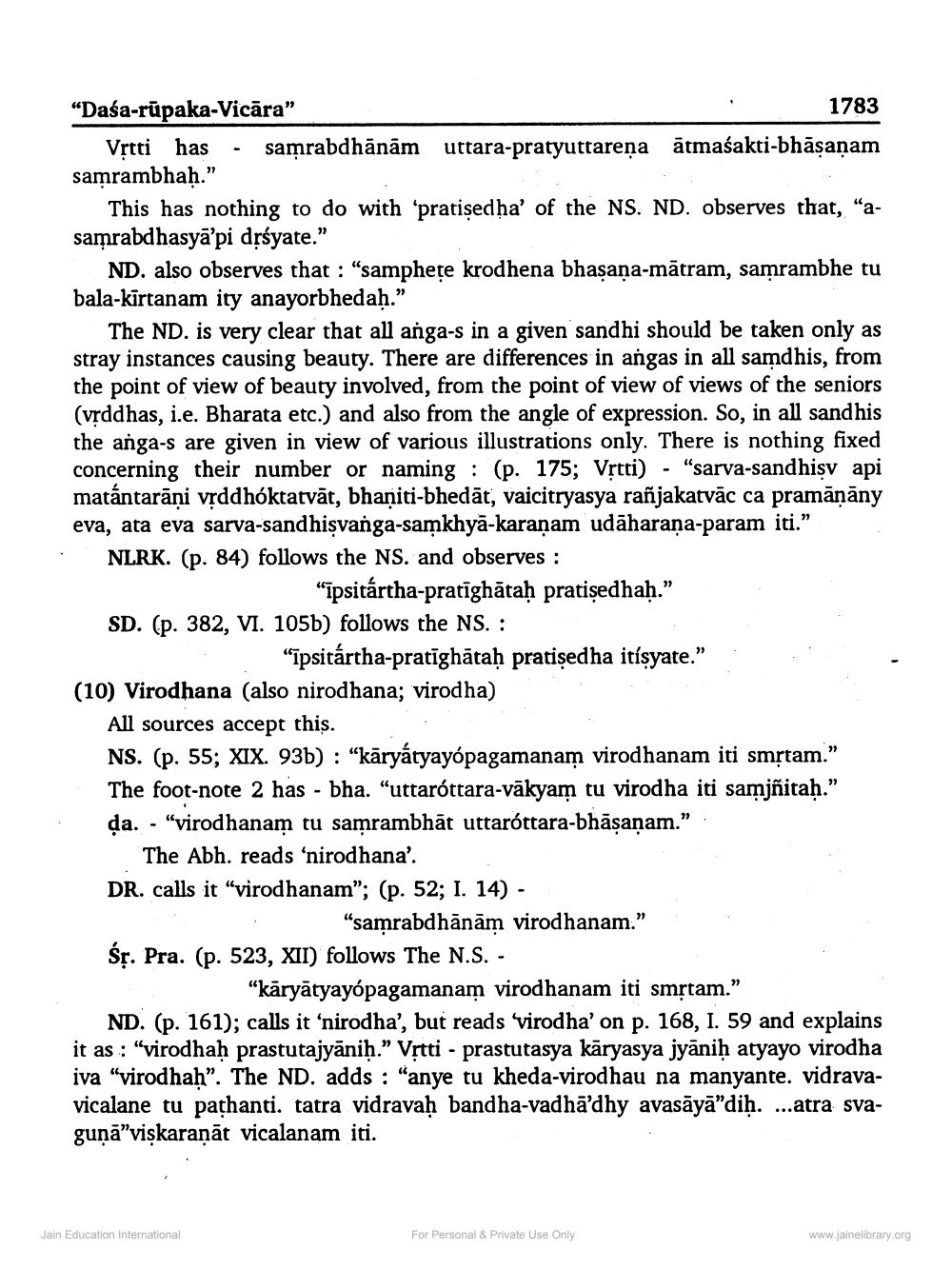________________
"Daśa-rūpaka-Vicāra"
1783 Vịtti has · samrabdhānām uttara-pratyuttareņa ātmaśakti-bhāsaņam samrambhaḥ."
This has nothing to do with 'pratiședḥa' of the NS. ND. observes that, “asamrabdhasyā’pi drśyate."
ND. also observes that : “samphețe krodhena bhasana-mātram, samrambhe tu bala-kīrtanam ity anayorbhedah."
The ND. is very clear that all anga-s in a given sandhi should be taken only as stray instances causing beauty. There are differences in angas in all samdhis, from the point of view of beauty involved, from the point of view of views of the seniors (vrddhas, i.e. Bharata etc.) and also from the angle of expression. So, in all sand his the anga-s are given in view of various illustrations only. There is nothing fixed concerning their number or naming : (p. 175; Vịtti) - "sarva-sandhişv api matántarāni vrddhóktatvāt, bhaniti-bhedāt, vaicitryasya rañjakatvāc ca pramānāny eva, ata eva sarva-sandhişvanga-samkhyā-karanam udāharana-param iti.” NLRK. (p. 84) follows the NS. and observes :
“īpsitártha-pratīghātaḥ pratiședhaḥ.” SD. (p. 382, VI. 105b) follows the NS. :
“īpsitártha-pratīghātaḥ pratiședha itisyate.” (10) Virodhana (also nirodhana; virodha)
All sources accept this. NS. (p. 55; XIX. 93b) : “kāryátyayópagamanam virodhanam iti smệtam.” The foot-note 2 has - bha. "uttaróttara-vākyam tu virodha iti samjñitaḥ.” da. - "virodhanam tu saņrambhāt uttaróttara-bhāṣaṇam." :
The Abh. reads ‘nirodhana'. DR. calls it “virodhanam”; (p. 52; I. 14) -
"samrabdhānām virodhanam." Śr. Pra. (p. 523, XII) follows The N.S. -
“kāryātyayópagamanam virodhanam iti smộtam.” ND. (p. 161); calls it ‘nirodha', but reads 'virodha' on p. 168, 1. 59 and explains it as : "virodhah prastutajyānih.” Vịtti - prastutasya kāryasya jyāniḥ atyayo virodha iva "virodhah". The ND. adds : "anye tu kheda-virodhau na manyante. vidravavicalane tu pathanti. tatra vidravah bandha-vadhā'dhy avasāyā"dih. ...atra svagunā"viskaranāt vicalanam iti.
Jain Education International
For Personal & Private Use Only
www.jainelibrary.org




